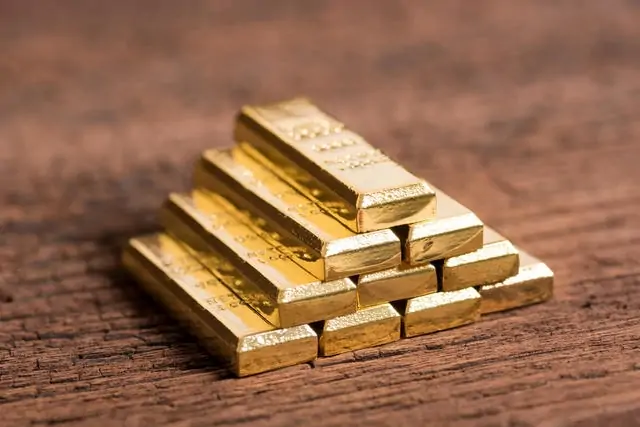Analysis: Gold set for further record prices in 2024 and 2025
Gold prices have been setting annual records for the past three years. They are expected to set further records in 2024 and 2025, as the world struggles with a host of domestic and international political issues, a likely slowdown if not outright recession in the United States and some other developed countries, and various other economic and financial market challenges.


Gold had been in a cyclical low consolidation phase from April 2013 until June 2019, trading between US$1,200 and US$1,350 per oz. for most of that period. But prices have been on the rise since then.
They rose to a record average of US$1,775.58 in 2020, up 37.2% from the annual average price the previous year. After that, there were incremental increases over the next three years. In 2021, gold averaged US$1,799.32, rising to an average of $1,804.36 last year. This year through October, the price averaged US$1,940 per oz., up 7.4%.
That compares to a daily record US$2,058.40 per oz. on a daily settlement price basis in 2020. This year gold touched US$2,152.30 on an intraday basis on Dec. 3, after reaching a new record high settlement price US$2,089.70 on Dec. 1.
For the full year 2023, CPM Group projects an average price of US$1,950 or higher, with prices likely to end the year above US$2,000 per ounce.
CPM expects gold prices to average well above US$2,000 in 2024 and probably above US$2,100 per oz. in 2025.
In the face of four consecutive years of record gold prices, it is strange that so many gold market investors, mining executives, and observers have continually wondered aloud why gold prices are so low. Clearly it is not a matter of gold prices being too low but rather that these folks have too great expectations for gold prices.
Gold prices reflect (a) supply and demand fundamentals and realities, (b) the increasingly hostile political world, and (c) the state of the global economy, which has backed away some from severely gloomy expectations but still is shrouded in economic and financial system issues that could combine with those political risks to trigger severe economic, political, and social conditions. Each of these three sectors interact to determine the directions and levels of all commodity prices, including gold. Each warrants sober, unbiased analyses.
The fundamentals still apply
Mine production, secondary recovery of gold from scrap, fabrication demand, central bank buying and selling, and investment demand all influence gold prices.
Of these, the most dynamic, the best financed, the most volatile and unpredictable sector is investment demand, and it has the most influence on gold prices.
Investors bought on a net, collective basis, 16 million oz. of physical gold in 2018 and 17 million oz. in 2019. These are relatively low volumes of net investment demand, and this was reflected in the gold price.
By July 2019, the economic and political environments were darkening and investors stepped up their gold buying. Then 2020 came, bringing with it the COVID-19 pandemic and global lockdown, an engineered deep recession globally, and massive government financial support programs around the world. In this environment, investors bought 40 million oz. of gold, close to their historically highest levels of net investment demand. This was in fact the fourth largest annual net investment buying spree in history, supporting strong gold prices.
Over the next three years economic and political conditions remained difficult, even with the turbo-charged recovery in 2021 as the vaccines circulated, economies opened up, and stimulus money was spent.
In this environment, investors were net buyers of 24-27 million oz. of gold bullion per year. This was strong enough to keep prices above US$1,625 per oz. for most of this period, but it was not the 40 million oz. of demand that had fuelled the 37% increase in annual gold prices in 2020. That said, it also was not the 16-17 million oz. annual levels that kept prices below US$1,350 per oz. in 2018 and the first half of 2019.
Net investment demand is projected to top 30 million oz. next year, possibly approaching 40 million oz. in 2025. Such levels of demand would be fuelled by a combination of corrosive political and economic developments. Unlike in the period 2007-2011, CPM expects political concerns to play a more decisive role over the next two years than will economic conditions. But economic conditions and financial market instabilities certainly are expected to weigh on investors’ minds, helping convince them to buy historically large volumes of physical gold even at record high prices.
Hand in glove with investors stocking up on gold will be central bank buying. Central banks have been buying around 10 million oz. per year on average since around 2009. They bought around 10.2 million oz. in 2022 and are on pace to buy around 13 million oz. this year. They should be expected to continue buying large volumes of gold for more than the next decade, but they may back off slightly over the next two years. (CPM projects gold supply, demand, investment demand, official transactions, and prices out 10 years.)
Any dip in central bank buying over the next two years will be price related. As opposed to private sector investors who will chase prices higher, buying more metal as prices rise, central banks are much more price sensitive. They are value investors who prefer to buy during periods of less intense private investor demand. Thus, central banks were large buyers of around 17 million oz. per year in 2018 and 2019, but bought less than half of that when prices rose sharply in 2020.
One example is the People’s Bank of China, perhaps the largest volume buyer in the past decade. It was regularly buying gold for its monetary reserves from domestic refined production through the first half of 2019. When gold prices shot up in July 2019, they stopped adding gold to their reserves. They only resumed buying in November 2022, once gold had fallen from US$2,043 per oz. earlier that year to US$1,623. Since then, the PBOC has bought more than 8 million oz. of gold from domestic sources.
Strange theories
While central banks as a group have been steadily adding gold to their monetary reserves, there has been an enormous explosion of strange comments and theories about what central banks plan to do with gold. There are no plans for the emerging BRICS group (including Brazil, Russia, India, China and South Africa) to establish a gold-based trading currency. (While Vladimir Putin has spoken of this, the governments and central banks of the BRICS countries have made it clear they have no interest in any such arrangements.) There are no plans to recall circulating currencies. The idea of returning to some sort of gold standard circulates only in the minds of people nostalgic for a stable economic past that in fact never existed.
Central bankers and mainstream economists uniformly know that past gold standards led to massive economic problems, including repeated depressions, periods of super high inflation, and worse. They know that every past gold standard ended in disaster. None of this empirical evidence dissuades believers in magical gold standards. After all, to stop believing something because real-world evidence shows your beliefs are misplaced is blasphemy, a breach of faith.
Such talk is an aside. Meanwhile, central banks seek to diversify their monetary reserves, with 60% of their foreign exchange holdings in U.S. dollars. The small relative size of the gold market limits the extent to which gold can diversify these holdings, while the relative lack of liquidity and much higher volatility of gold limit central banks’ interest in the metal.
Stock demand – the purchases of gold for addition to gold bullion holdings by either investors or central banks – is the key driver of gold prices. Fabrication demand and supply are important factors, but less dynamic.
Mine production for its part has stabilized over the past three years, after three years of declining output. Mine output appears likely to be relatively flat in 2024 compared to the 87.6 million oz. projected for 2023. Beyond next year mine production is expected to resume its decline for several years.
Secondary supply is projected to rise sharply from 34.8 million oz. in 2023 over the next two years, as significantly higher record prices stimulate jewelry owners to sell old, broken, and unwanted pieces for gold. Beyond 2025 such sales would be expected to decline once more, assuming CPM’s longer-term projections of lower prices in later years proves accurate.
Fabrication demand is projected to reach 92.6 million oz. this year. Most of this, around 77 million oz., went into jewelry and decorative objects. Gold is also used in electronics, chemicals, dental and medical applications, and other fabricated products.
While some people reasonably expected the higher gold bullion prices would lead to reductions of gold jewelry sales, gold prices are only one factor that influences jewelry demand. Jewellers work hard to preserve the ‘price points’ or affordability of jewelry pieces, reducing the gold content per piece as prices rise. Jewelry demand also is heavily influenced by wealth factors, and the relative liquidity of many consumers due to the government stimuli programs of 2020 have keep jewelry demand buoyant over the past three years. That may dissipate over the next two years, however.
Putting all of this together into a gold price outlook, it appears likely that the plethora of political, economic, financial, and social problems will continue to stimulate investor demand over the next couple of years, with additional demand from monetary authorities. This demand is likely to push gold prices higher, setting further records over the next two years, or until things improve. In the meantime, buckle up.














